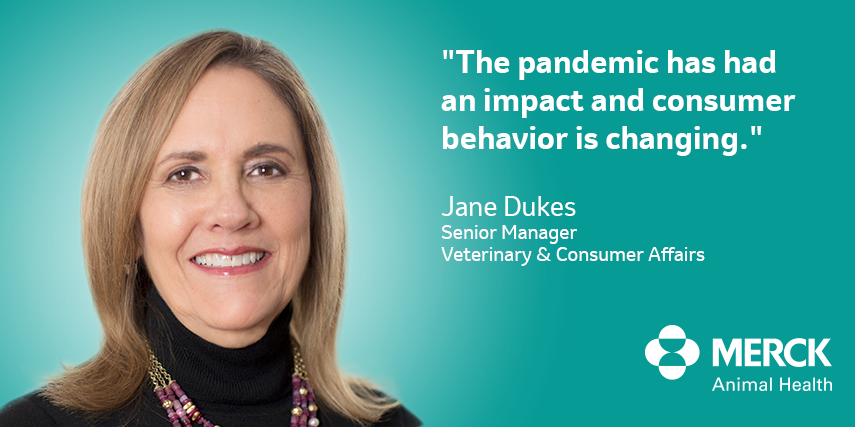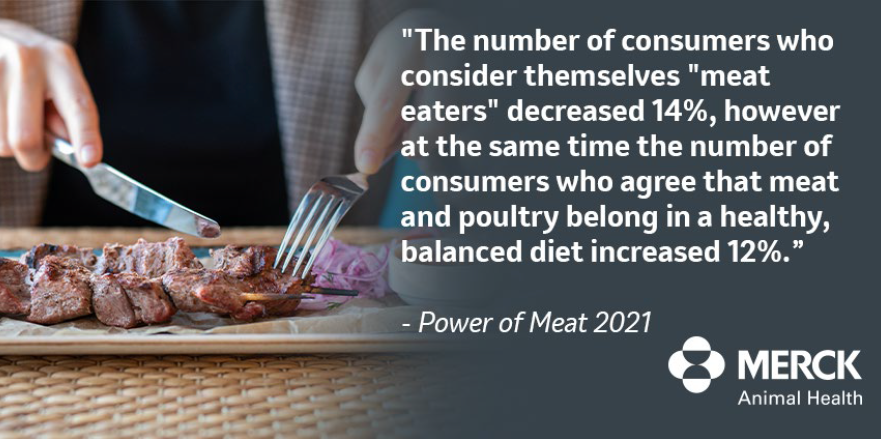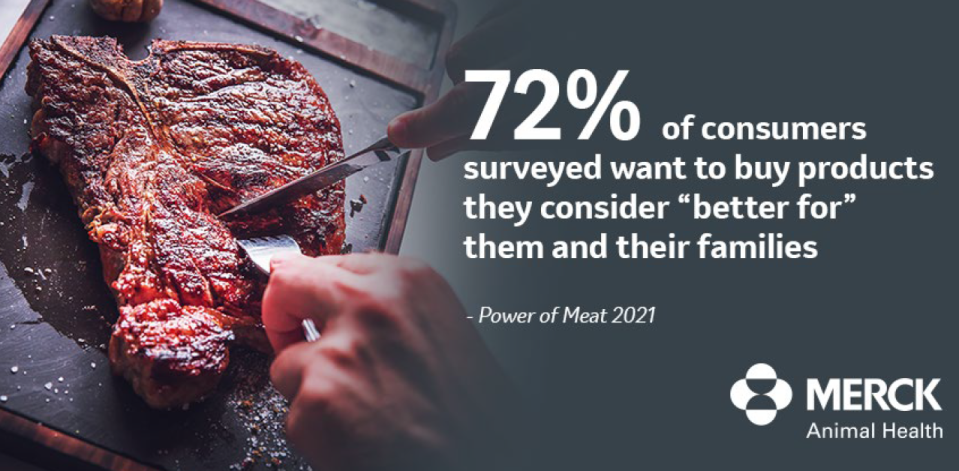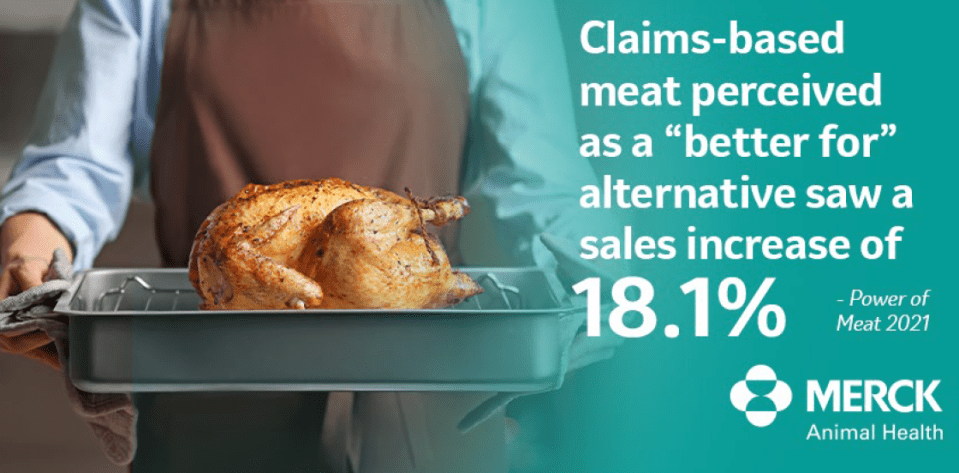New Consumer Behavior Driven by Covid-19 Anxiety: Part 1
Will things ever be the same again?

By Jane Dukes, Senior Manager, Veterinary & Consumer Affairs
The Covid-19 global pandemic has changed just about everything about the way we live around the globe. The impact is still being felt today even as the roll-out of vaccines is increasing some levels of comfort. I’m not telling you anything you don’t know, of course. Each of you reading this article has been impacted by the pandemic in some way yourselves.
As someone who is passionate about consumer perspectives, behavior and trends, the pandemic provided a plethora of new consumer habits and data to examine. I have been following new trends with keen interest wondering as many of us do, “how long will this last?”
Today, I’m looking primarily through the lens of the Power of Meat 2021, An In-Depth Look at Meat and Poultry Though the Shopper’s Eyes, published annually for the past 16 years by the Food Marketing Institute (FMI) and the Foundation for Meat & Poultry Research & Education. While the focus of the report surrounds consumer trends in relation to animal protein, the data could also be extrapolated to look at the broader state of consumer wants, needs and behavior as we begin to move toward a post-pandemic world and wonder, “will things ever go back to normal?” I’ll take a look at this in my two-part series.

New Shopping Habits: Are They Here to Stay?
How we shop, where we shop and how much we buy is driven by stay-at-home orders, the wallet, and a need to shop safely. I know for me, a “simple” trip to the grocery store for a gallon of milk looked very different in 2020 as compared to 2019.
For example, while many of us would have simply jumped out of the car while running errands or on the way home from work for a gallon of milk, the pandemic changed this “simple task” into a much bigger process. Gone are the trips for single items or to pick up food for a single meal. Instead, we log-in, fill our virtual cart, and schedule delivery or pick-up – most of the time receiving a full cart/basket of items as opposed to a few items. Or, if we are still shopping in a brick-and-mortar store, we are now more deliberate about our trips – which are fewer, and most of the time for a full list of groceries not just one or two things. Adding to this “simple task,” were steps like wearing a mask, using a sanitizing wipe on our shopping cart, speaking to the clerk through plexiglass, and more.
This is true for most consumers around the globe. While only 9% of global consumers were regularly shopping online before the COVID-19 pandemic, by May of 2020, 44% of global consumers said they were shopping online each week with 23% reporting shopping online multiple times each week, according to NielsenIQ. Previously online shopping skewed toward working urban millennial families, but the ranks of online shoppers have grown particularly among older generations and households without children, FMI shared in their 2020 Grocery Shopper Trends Report. Necessity is as they say, the mother of invention. I’ve shopped online for 25 years to avoid taking crying babies to the grocery store.
- In addition, we learn from the Power of Meat that online shopping among meat shoppers who may have been more reticent to buy meat through this channel also rose from 40% in 2020 to 56% this year.
- And, consumer packaged goods experts at Acosta, share that 59% of shoppers plan to hold onto at least some and 16% will continue with most of the shopping habits they adopted last year amid the pandemic, so it appears that online shopping for groceries is here to stay.
Meat Department Sales Soar
Unfortunately for the restaurant industry, stay-at-home orders also meant meal occasions moved home too – and the meat dollar went with it. A few highlights from the Power of Meat worth noting:
- More meals are being prepared at home with an increased demand for lunch driven by work from home, school at home and simply more people at home as college students quarantined too. As a result of more meals and more dayparts, 43% of shoppers bought more meat/poultry.
- Meat department sales reached $82.5 billion, an increase of 19.2% and volume increase of 11% led by beef in 2020. To put that number in perspective, there was only 1% growth in dollar sales in 2019.
- Beef was the clear frontrunner on the dinner plate as evidenced by a 2020 gain of 23.7%. Beef and chicken have dominated meat department sales for some time, however, during the pandemic, beef led the way.
- A higher meat dollar spend-per-trip, which increased by double digits, 21.8%, was the result of fewer trips to the store and stocking-up while there.
A global study by Alix Partners looked at changing consumer priorities and habits that may have changed permanently and highlights that 51% of consumers report they will continue to eat at home and 14% will continue to spend more on groceries post-vaccine.

Pandemic-Created Conundrums
Now we come to the part of the Power of Meat study that really piqued my interest. The number of consumers who consider themselves “meat eaters” decreased significantly – by 14%. To put this in perspective, in 2019, 85% of consumers surveyed considered themselves meat eaters and 81% put themselves in that category pre-pandemic, but that number fell to 71% today. The pandemic has had an impact and consumer behavior is changing.
The good news: 76% of shoppers surveyed for Power of Meat 2021 agreed that meat and poultry belong in a healthy, balanced diet – up a significant 12% from 2020. At the same time, the number of consumers actively trying to reduce their meat/poultry consumption also increased 6% to 34%. The top strategy for reducing meat consumption was reported as eating smaller portions, so it makes sense then that the number of consumers who consider themselves flexitarians (those who eat meat/poultry, but less often…or in smaller portions) also increased 7%.

The primary reasons cited for wanting to consume less meat/poultry are very similar to those reported last year and surround the healthfulness of eating meat and concerns about animal welfare and the environment. Interesting to note, however, that the number of consumers who feel guilty about eating meat dropped 8% and those concerned about animal welfare and the environment dropped 7% and 6% respectively.
Falling consumer concerns is good news! In my next article, we’ll dive a little deeper into how Covid-19 anxiety is driving changing consumer behavior and the continuous improvement of agriculture to meet consumer needs.
For more information about animal agriculture and to learn more, feel free to reach out to me and be sure to check out our website and tune in to our podcast: Caring for Animals & Creating Trust.

New Consumer Behavior Driven by Covid-19 Anxiety: Part 2
Will things ever be the same again?
EVERYONE has been impacted by the Covid-19 global pandemic and the lingering questions for most of us are, “will things ever be the same again?”
And, “When will things go back to normal?” In my last article, I discussed how the pandemic has changed shopping and eating habits around the globe. Today, I’d like to do a deeper dive specific to animal protein and keeping it on the plate as part of a healthy, balanced diet. According to the Power of Meat 2021, the number of consumers who agree that meat and poultry belong in a healthy, balanced diet went up 12% to 76% of consumers…but the number of consumers who consider themselves meat eaters dropped 14%.
Covid-19 Anxieties Drive New Consumer Behaviors
What’s driving this behavior? In the Power of Meat 2021 , respondents said they are focusing on quality rather than quantity and looking to save money. Perhaps not surprisingly the number of respondents who cite “trying to save money” as a reason for eating less meat/poultry jumped 14% from last year, and that makes sense during a pandemic. In a different study, AlixPartners found consumer worry about financial health was the biggest concern globally for everyone under the age of 65.
©2021 Intervet Inc., doing business as Merck Animal Health, a subsidiary of Merck & Co., Inc. All rights reserved.
Insights from AlixPartners’ global study might allow us to better understand new consumer behavior. Following a year during which “people have been riddled with anxieties about finances and physical as well as mental health,” the study mapped consumer behavior by two main vulnerabilities – health (this includes mental and physical) and finances. The study found that consumer behaviors take on four distinct dimensions: Least Disrupted, Health Concerned, Budget Constrained and Most Anxious. According to these dimensions, Health Concerned and Most Anxious consumers report experiencing both the largest and most lasting changes in behavior. And, 44% of US consumers surveyed fall in the most anxious dimension consistently indicating they are concerned about health and finances.
This is leading to behaviors that may be here to stay, according to AlixPartners:
- Half of all global consumers say their spending habits have changed permanently due to the pandemic.
- One in two consumers around the globe says their consumption habits have changed permanently due to the pandemic.

Shoppers Increasingly Look for “Better For”
If consumers are concerned about mental and physical health and financial security, it makes sense that they are looking for “more” when they purchase just about anything. Power of Meat 2021 identified that 72% of consumers surveyed want to buy products they consider “better for” them and their families (up from 66% in 2019). Claims-based meat perceived as a “better for” alternative saw a sales increase of 18.1%. Raised in the USA, no added hormones and all natural are the three claims the study highlighted that shoppers would like to see “more”.
What consumers want:
- 34% “better for” the planet. (According to the study by AlixPartners, only 28% of US consumers say it would affect purchase decision-making)
- 29% “better for” the farmer/worker
- 27% “better for” the animal
- 17% would consider all three


Animal protein is part of a healthy balanced diet.
If 72% of consumers are looking for “better for them and their families,” animal protein should remain on the plate. Our bodies need 22 amino acids to function, and we can’t produce them, so it’s important to include protein in our diet – protein is the nutrient that provides amino acids as you may recall from high school biology. Animal protein sources like meat, poultry, eggs, fish and dairy are considered complete sources of protein because they contain all of the essential amino acids the body needs to function effectively, whereas plant protein does not – according to the Journal for Sports Science and Medicine. I know from experience during my time at McDonald’s promoting our role of feeding the world’s elite athletes during the Olympic Games, that it’s all about choice, and meat fits into a healthy, balanced diet.

Animal welfare is a top priority for farmers, ranchers, and veterinarians.
Transparency moves the comfort needle. Consumers want to know more about their food – how it is grown/raised and where it comes from, and there was more good news in Power of Meat 2021. The number of consumers who think the meat they purchase comes from humanely raised animals grew 5% to 44% of shoppers surveyed today. And, the number of consumers who report they “don’t know” went down. We’re doing a better job of sharing our stories and advocating for agriculture, and we’ve made some progress. We can’t stop here, as there’s still work to do to share information transparently with consumers.

Growing any kind of food – plant or animal – has an environmental impact and continuous improvement is a priority. Animal agriculture has made significant progress.
I’m continuously learning new ways in which animal agriculture is improving its stewardship of our natural resources. Here are a few factoids I’ve been sharing with audiences I engage with:
- The National Chicken Council’s Chicken Check In shares it takes 58% less water and 72% less land to produce the same amount of chicken than it did 1965.
- The carbon footprint of dairy has shrunk by 66% between 1950 and today. The US dairy herd is 64% smaller than in 1950, and yet the smaller herd is producing 60% more milk according to the GHG Guru – Dr. Frank Mitloehnner, during a 2019 podcast.
- US beef production reduced its carbon footprint by 16% and used 33% less land and 12% less water from 1977 to 2007, again, according to Dr. Mitloehner during a 2021 interview with The Washington Examiner.
- Pig farmers reduced the carbon footprint of pork by 7% and use 76% less land, 25% less water and 7% less energy since 1965 according to A Retrospective of U.S. Pork Production.
It will be interesting to see how consumer trends evolve as more and more people are vaccinated and feel more comfortable to return to life as we knew it. How quickly this will happen and how fully life will return to normal remains to be seen. In the meantime, let’s keep up the good work of sharing our stories transparently to address consumer concerns and advocate for agriculture.
For more information about animal agriculture and to learn more, feel free to reach out to me and be sure to check out our website and tune in to our podcast: Caring for Animals & Creating Trust.
